Remember
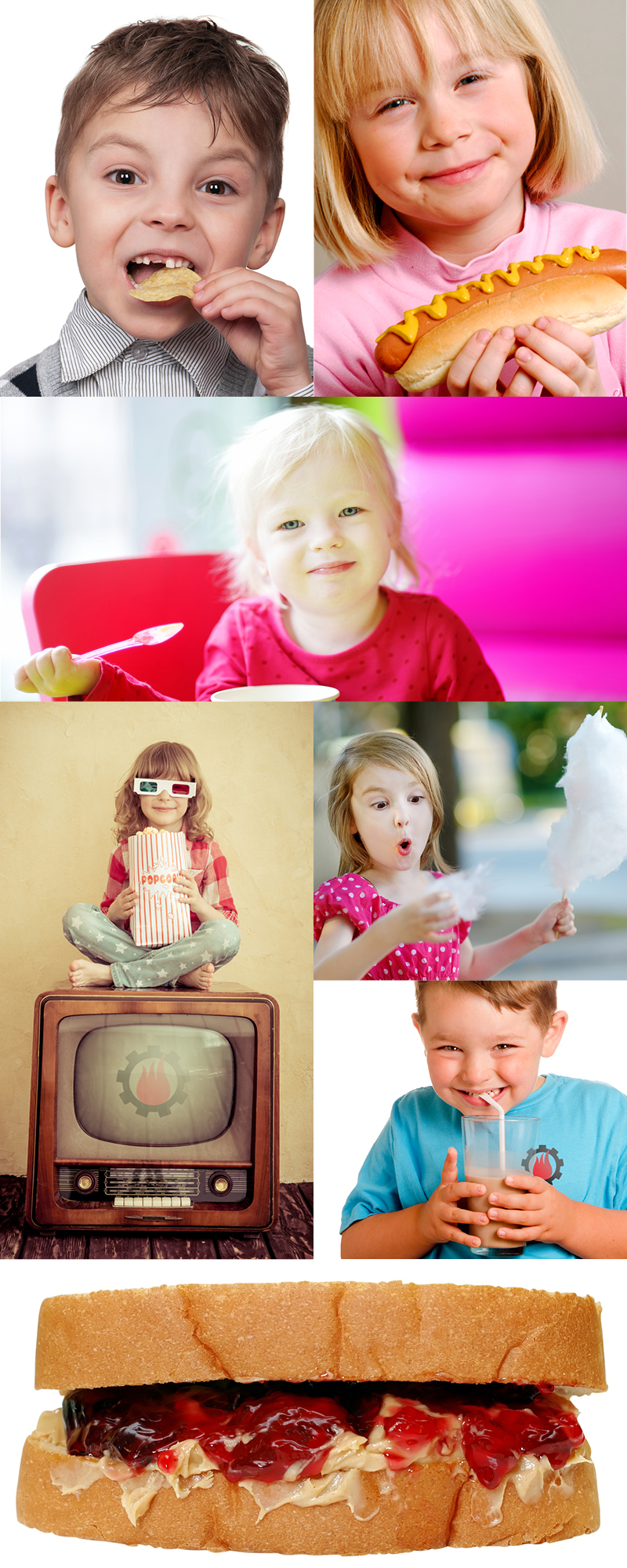
Chips ‘n dip, hot dogs and ice cream, oh my! Remember what was so great to eat when you were a kid?
Over the weekend I was chatting with one of my brothers (I have 17 siblings in my family…), and we got reminiscing about old friends, kids from the neighborhood, crazy games we played, and of course some of the memorable foods we grew up on. Being a “foodie”, I naturally had a whole list of favorites that came crashing to mind, like Lawson’s French Onion Dip, and Dairyman’s lemon and red drink in the big gallon jugs, along with staples like chocolate milk and ice cream in the small cardboard cups and wooden spoon they served at school. For fun, I thought I’d list a bunch here, and add in a little KHT trivia so you know more of the backstory. If a favorite of yours comes to mind, please shoot me an email – love to share the stories and memories (fireballs, fish sticks, fried liver (with ketchup of course!) Enjoy!

Remember Lawson’s stores? Their chip dip can still be found, but you’ll have to go to Japan to visit a store.
Lawson’s Chip Dip: many thanks to Lawson’s for helping me get through the long nights, homework, breakups, sports watching and hours waiting for dinner to be served – your contribution to our creamy onion-y snacking it tops on our list. Tip: Although the Lawson’s stores we were familiar with are gone, thankfully the company is owned by Circle K and they kept Lawson’s products on the shelves. (Whew.)

These were sooooooooo GREAT!!
Dixie Cup Ice Cream:the exact origins of the paper cup seem to be unknown, therefore the inventor of the handy disposable beverage and ice cream holder may never be known, although there is evidence that they were used as far back as Imperial China. Around the beginning of the 1900’s, paper cups gained popularity when people began to realize that sharing the same tin or ladle, to drink from water barrels, also meant sharing germs. In 1907, a Boston lawyer named Lawrence Luellen, developed the “Health Kup” (which later became known as the Dixie Cup in 1919) to help improve public health and hygiene. During the great American flu epidemic of 1918 paper cups rapidly grew in popularity as a way of avoiding infection. In the century since, the paper cup has evolved from a simple health solution to an everyday convenience object. Chocolate or vanilla?
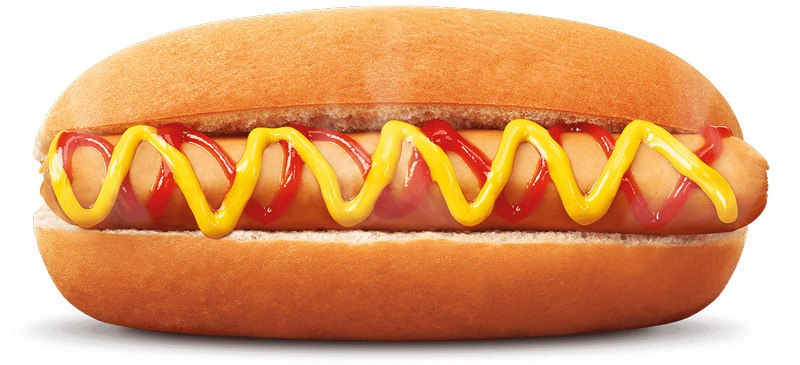
Ok, I’m getting hungry.
Hot Dog Day at School: what a simple idea. Boil hot dogs, slap them in buns, and watch the kids lap them up. Made famous in the US at the 1893 Chicago World’s Colombian Exposition, Germany served hordes of visitors who consumed large quantities of “sausages”. People liked this food that was easy to eat, convenient and inexpensive -perfect for mass production school cafeterias. The Hot Dog Council estimates Americans consume 20 billion hot dogs a year – that works out to about 70 hot dogs per person each year. Hot dogs are served in 95 percent of homes in the United States. Are you mustard or ketchup, or both? Pickle or relish?

Remember the Charles Chips trucks?
Charles Chips: In 1942:Effie Musser was making a batch of her delicious potato chips in her small rural Pennsylvania kitchen and had a great idea. Si, her husband and farmer by trade, was having difficulties raising enough money to keep them afloat, so she thought of a way to create some additional income, by taking her chips to the famous Central Market located in Penn Square in historic Lancaster, Pennsylvania and maybe sell a few bags. After great success, a snack distributor from Baltimore, MD contracted Effie for her to deliver her chips in bulk to him. He repacked the bulk chips into his branded tin can and renamed them Charles Chips (after Charles St in downtown Baltimore). Production grew, and by the late 50’s, Si and Effie expanded the brand to include Charles Pretzels, Cookies and a Christmas Holiday Gift program. Home delivery was the key in the 70’s, distribution reached California and by 1990’s the company wholesale revenue reached $45M. In 1991, Effie and Si sold Charles Chips to some Philadelphia investors; however, within 18 months the new company went bankrupt. (Don’t fret, you can still buy them from another manufacturer).

On the left is the sign that poured milk. And milkmen dropped your weekly supply at your door step.
Dairyman’s: Anyone remember the Diarymans bottle sign? It was an electric sign of a milk bottle tipped filling up a giant glass. Not sure how many light bulbs this thing had. But the bottle would be lighted up and the bulbs would go off to show the bottle being emptied as the glass was filled. We would look for it both going to and coming from the car, even looking out the back window for a prolonged look as we came home. Diarymans chocolate milk … heaven! And those big gallon jugs of red and lemon drink, made hot days of summer melt away.

MMMmmmMMMmmmm, Steak-umms!!
Steak-umm’s:According to inventor Gene Gagliardi, Steak-umm was created after putting beef through a grinder multiple times, mixing and molding it, freezing it, softening it, then ultimately slicing it paper thin. In a 2012 lawsuit, Judge Lawrence Stengel described the product as “chopped and formed emulsified meat product that is comprised of beef trimmings left over after an animal is slaughtered and all of the primary cuts, such as tenderloin, filet, and rib eye, are removed. The emulsified meat is pressed into a loaf and sliced, frozen and packaged. So that’s why I liked them … I could go through a box in no time, white bread with a little butter to hold back the grease.
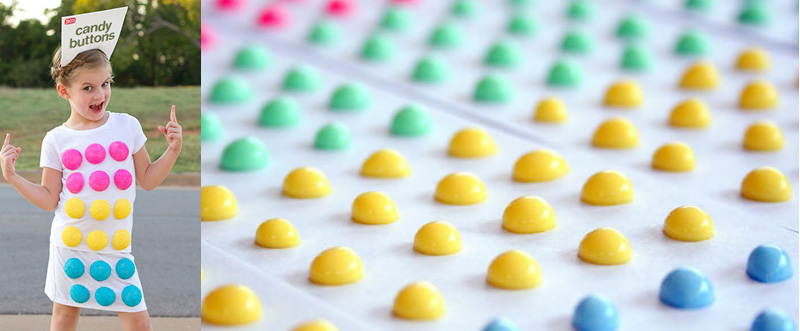
These were so much fun. Still are!
Candy Dots:(Candy Buttons or Pox): “dots” are small rounded pegs of candy that are attached to a strip of paper. This classic sugar candy was originally introduced by the Cumberland Valley company and J Sudak and Son of Williamsburg, Brooklyn. Each strip of the candy includes three flavors: cherry (pink), lime (blue), and lemon (yellow). Candy Buttons came in two strip sizes: long and short. In 1977, Sudak, changed the name to Uncle Nibbles Candy Factory, and sold to a re-packager in Manhattan named CeeDee Candy, they then sold to Necco, who makes 750 million candy buttons in the course of a year. PIA Award -engineer and inventor George Theofiel Dib, credited with the invention of the candy button machine.
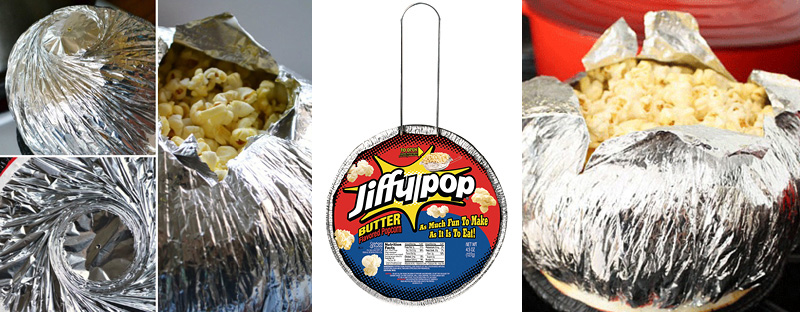
The first convenience popcorn. Always fun to make it blow-up.
Jiffy Pop: What was a “babysitter night” without Jiffy Pop (and the mystery of heat treating!). Frederick C. Mennen of LaPorte, Indiana, a chemist, inventor and industrialist, is credited with developing the product in 1958. Purchased by American Home Products in ‘59, within one year the product had reached the national U.S. market, spurred by stage magician Harry Blackstone Jr. endorsing what the television-commercial jingle called “the magic treat — as much fun to make as it is to eat.” Original Jiffy Pop packages used a plain, bright aluminum pan, eventually replaced by an aluminum pan with a black treatment on the outside to improve heat transfer (I love heat transfer!!). Jiffy Pop is still around today, offered in only one stovetop version, Butter Flavor Popcorn.
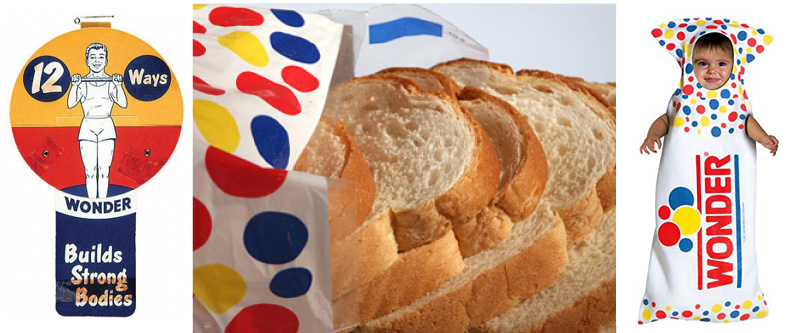
Remember Wonder Bread “Builds Strong Bodies 12 Ways”? Not sure what ways those were but it was fun packaging. And makes for a really fun Halloween costume.
Wonder Bread: Wonder Bread was originally produced by the Taggart Baking Company of Indianapolis, Indiana, and debuted on May 21, 1921, after a promotion with ads that only stated a “Wonder” was coming. Named by VP Elmer Cline, who was inspired by the International Balloon Race at the Indianapolis Motor Speedway, featuring hundreds of balloons creating a kaleidoscope of color resulting in the iconic red, yellow and blue balloons on the Wonder Bread wrapper. Continental Baking began shipping Wonder Bread in sliced form, one of the first companies to do so; a significant milestone for the industry and for American consumers, who, at first, needed reassurance that “wonder-cut” bread would not dry out. Unsliced bread returned for a while during World War II due to a steel shortage that led to an industry-wide slicing suspension in 1943. Bread slicers returned two years later when Continental Baking began adding vitamins and minerals to Wonder Bread as part of a government-sponsored program of enriching white bread. The company sponsored Howdy Doody with host Buffalo Bob Smith telling the audience, “Wonder Bread builds strong bodies 8 ways. Look for the red, yellow and blue balloons printed on the wrapper.” By the 1960s, Wonder Bread was advertised with the slogan “Helps build strong bodies 12 ways,” referring to the number of added nutrients. To this day, peanut butter and jelly on Wonder bread is still amazing!



Leave a Reply
Want to join the discussion?Feel free to contribute!